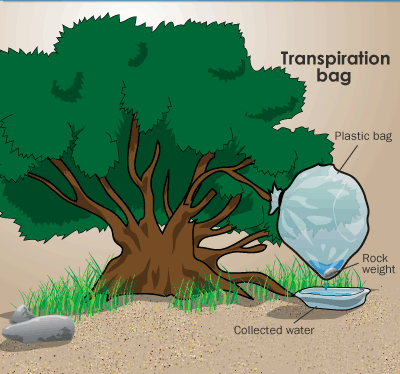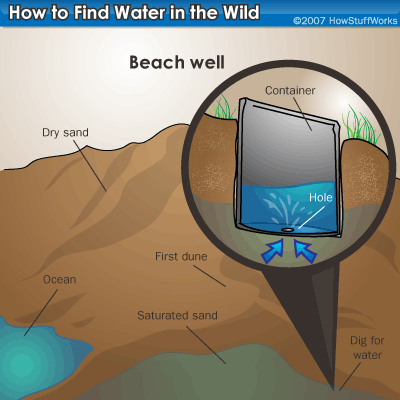If your energy is low, you’ll want to avoid the digging involved in a belowground still. All you really need is a clear plastic bag, and you can use the transpiration technique to collect potable water:
- In the morning, take a bag and tie it around a leafy green tree branch or shrub.
- Weight the inside with a rock to create a low point for the water to collect.
Over the course of the day the plant will transpire and produce moisture that will collect at the low point. Poke a hole to drink the water or pour it into a container for later. The water will taste like whatever plant you choose, but it’s better than nothing. It’s also important to use non-poisonous vegetation. Once you’re done, tie the hole shut and reuse the bag.
If you’re near the coastline, a beach well is an excellent way to get drinkable water. Dig a 3-5 foot hole in the depression behind the first sand dune. This is typically about 100 feet from the waterline. Put rocks in the bottom of the well to keep sand from getting too active and line the sides with wood if you can — this will prevent the walls from caving in. In a few hours, you could have up to five gallons of filtered water. If it tastes too salty, you should move further back behind the second sand dune.
This well technique works near any body of water. Dig swamp and lake wells closer to the water than the beach version. The same method also works in the desert during the wet season — just dig at the low point between dunes, near vegetation. Look for moist soil in dry river beds and chances are you can find groundwater underneath.
Now that we’ve collected water, it’s time to purify it.
Source: https://adventure.howstuffworks.com/
Dear User/Visitor! Please, answer on our questions: tick off one of the positions – your answer will make us able to improve our site and make it more interesting and useful!



